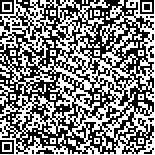| 摘要: |
| [摘要] 目的 探讨着丝粒蛋白L(CENPL)表达与肝移植术后肝细胞癌复发的关联性。方法 选择2014年1月至2020年6月在福建中医药大学附属第三人民医院、联勤保障部队第九〇〇医院和广西壮族自治区人民医院行肝移植术并术后肝细胞癌复发患者93例(复发组)。选择同期行肝移植手术但术后未复发的肝细胞癌患者46例(未复发组)。采用免疫组化染色法观察肝细胞癌组织和癌旁组织CENPL表达情况。分析CENPL表达与患者临床病理指标及生存预后的关联性。结果 光镜下可见癌组织CENPL染色呈阳性,主要表达在细胞核部位,少量在细胞质表达。多因素Cox回归分析结果显示,以CNLC Ⅱ期为参照,CNLC Ⅰ期是肝移植后肝癌复发的抑制因素[HR(95%CI)=0.46(0.13~0.91),P=0.013];以CENPL低表达为参照,CENPL高表达是肝移植后肝癌复发的促进因素[HR(95%CI)=1.68(1.41~2.99),P=0.003]。CENPL高表达组的中位无复发生存期(RFS)为5(3~22)个月,低表达组中位RFS为8(5~26)个月,两组差异有统计学意义(log-rank检验: χ2=9.269,P=0.002)。CENPL高表达组中位总生存期(OS)为14(8~40)个月,低表达组中位OS为22(9~37)个月,两组差异有统计学意义(log-rank检验: χ2=4.406,P=0.031)。结论 CENPL对肝移植术后肝细胞癌复发有预测价值,值得进一步研究。 |
| 关键词: 着丝粒蛋白L 肝细胞癌 肝移植 肿瘤复发 |
| DOI:10.3969/j.issn.1674-3806.2022.12.09 |
| 分类号:R 617 |
| 基金项目:福建省中青年教师教育科研项目(编号:JAT210142,JAT210143) |
|
| A study on correlation between expression of centromeric protein L and recurrence of hepatocellular carcinoma after liver transplantation |
|
FANG Jian, RUAN Mei, XIA Lei, et al.
|
|
Department of Hepatobiliology, the Third People′s Hospital Affiliated to Fujian University of Traditional Chinese Medicine, Fuzhou 350100, China
|
| Abstract: |
| [Abstract] Objective To investigate the correlation between the expression of centromeric protein L(CENPL) and the recurrence of hepatocellular carcinoma after liver transplantation. Methods A total of 93 patients with recurrent hepatocellular carcinoma who underwent liver transplantation in the Third People′s Hospital Affiliated to Fujian University of Traditional Chinese Medicine, the 900th Hospital of the Joint Logistic Support Force of Chinese People′s Liberation Army and the People′s Hospital of Guangxi Zhuang Autonomous Region from January 2014 to June 2020 were selected as the recurrence group. Forty-six patients with hepatocellular carcinoma who underwent liver transplantation at the same time but did not relapse after operation were selected as the non-recurrence group. Immunohistochemical staining method was used to observe the expressions of CENPL in hepatocellular carcinoma tissues and their adjacent tissues. The correlation between the expression of CENPL and the clinicopathological indicators and survival prognosis was analyzed. Results Microscopically, CENPL staining was positive in the cancer tissues, mainly expressed in the nucleus, and a small amount of CENPL was expressed in the cytoplasm. The results of multivariate Cox regression analysis showed that China Liver Cancer Staging(CNLC) stage Ⅰ was an inhibitory factor for HCC recurrence after liver transplantation with CNLC stage Ⅱ as the reference[HR(95%CI)=0.46(0.13-0.91), P=0.013], and the high expression of CENPL was a promoting factor for HCC recurrence after liver transplantation with the low expression of CENPL as the reference[HR(95%CI)=1.68(1.41-2.99), P=0.003]. The median recurrence-free survival(RFS) of the high CENPL expression group was 5(3-22)months, and the median RFS of the low CENPL expression group was 8(5-26)months, and the difference was statistically significant between the two groups(log-rank test: χ2=9.269, P=0.002). The median overall survival(OS) of the high CENPL expression group was 14(8-40)months, and the median OS of the low CENPL expression group was 22(9-37)months, and the difference was statistically significant between the two groups(log-rank test: χ2=4.406, P=0.031). Conclusion CENPL has predictive value for HCC recurrence after liver transplantation, which is worthy of further study. |
| Key words: Centromere protein L(CENPL) Hepatocellular carcinoma Liver transplantation Tumor recurrence |

